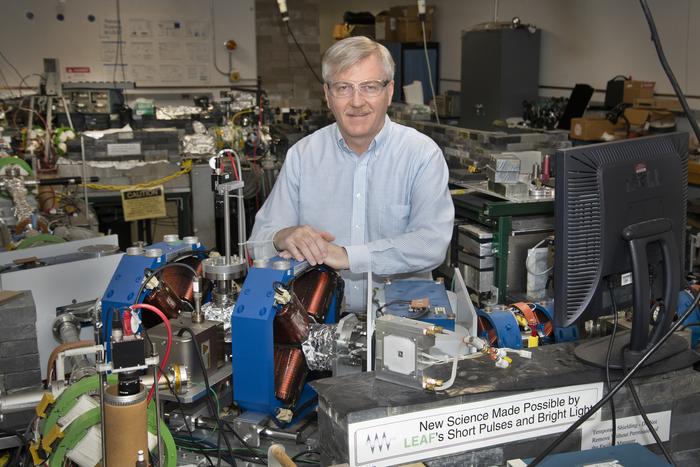UPTON, N.Y. — In the ever-evolving landscape of nuclear energy, the challenges posed by high temperatures and ionizing radiation continue to drive innovations in reactor design and material science. As the demand for safer and more efficient nuclear reactors intensifies, researchers at the U.S. Department of Energy’s Brookhaven National Laboratory are pioneering crucial studies that unravel the complex chemistry underlying molten salt reactors. Their enlightening findings, recently published in the journal Physical Chemistry Chemical Physics, promise to reshape our understanding of corrosion mechanisms in these advanced reactors, thus enhancing their operational longevity and safety.
Molten salt reactors represent a groundbreaking development in nuclear technology, offering significant advantages over conventional water-cooled reactors. These next-generation systems can operate at elevated temperatures while maintaining ambient pressure, which not only enhances their energy efficiency but also addresses many safety concerns inherent to traditional designs. The innovative use of molten salts as coolant—comprised solely of positively and negatively charged ions—enables a unique operational dynamic, akin to the transition of table salt from solid to liquid form. This state is achievable only at high operational temperatures, necessitating a comprehensive understanding of the materials used in construction as well as their chemical interactions under extreme conditions.
At the heart of Brookhaven Lab’s exploration lies the fundamental question: How do molten salts interact with various metallic elements in environments characterized by intense radiation? To answer this, the research team, led by distinguished chemist James Wishart, has zeroed in on chromium—a metal frequently incorporated into the alloys proposed for use in molten salt reactors. Understanding chromium’s behavior in these high-stress environments is critical due to its predominant role in corrosion processes, which could severely impact reactor integrity and performance.
Wishart highlights the pivotal concerns associated with chromium’s presence in molten salt environments. It is commonly observed that chromium from the structural alloys can dissolve into the coolant, leading to a myriad of chemical reactions that can exacerbate corrosion through the formation of more aggressive oxidation states. In particular, the oxidation states of chromium—specifically trivalent chromium (Cr³⁺) and divalent chromium (Cr²⁺)—play a crucial role in dictating the corrosive potential within the reactor’s cooling system. The intricacies of chromium’s redox chemistry are fundamental to predicting the lifespan and reliability of the reactor components, making this research a linchpin in the advancement of molten salt technology.
Diving deeper into the chemistry, the researchers sought to understand how different oxidation states of chromium reacted with various species produced under radiation bombardment. This investigation unraveled the troubling fact that while Cr³⁺ can potentially accelerate corrosion processes, the presence of Cr²⁺ appears to be less harmful, thus creating a necessary balance that engineers and scientists must navigate to ensure reactor performance remains uncompromised.
To facilitate their experiments, the Brookhaven team leveraged advanced facilities capable of inducing radiation-driven chemical reactions and tracking these processes in real time. The Laser Electron Accelerator Facility and the two-million-electron-volt Van de Graaff accelerator provide the necessary high-energy environments to simulate the conditions within a functioning nuclear reactor. Here, the researchers meticulously measured the reaction rates and temperature dependencies of chromium ions in molten salt—insights that are invaluable for future reactor designs.
One of the most illuminating findings was that the radiation environment within molten salts tends to promote a conversion of corrosive chromium ions from the trivalent state to the less corrosive divalent state. This transformation underscores a potential mitigation strategy for combating corrosion, as it suggests that radiation can inadvertently assist in preserving the structural integrity and function of reactor materials over time, a notion not previously articulated in the context of molten salt reactors.
Furthermore, this research aligns with a broader initiative within the Department of Energy’s Office of Science, which has established the Energy Frontier Research Center focused on "Molten Salts in Extreme Environments." This center aims to explore the fundamental properties and applications of molten salts, underscoring the significant investments and commitment to advancing nuclear energy technologies in a sustainable manner.
With nuclear power being vital to addressing global energy needs and climate goals, furthering our understanding of material interactions in molten salt reactors is more than just an academic pursuit; it is a crucial step toward ensuring that the next generation of reactors can be both efficient and resilient against the corrosive forces at play. This foundational research from Brookhaven Lab could change the narrative around nuclear energy, making it a more viable option for large-scale energy production without compromising safety or structural reliability.
In conclusion, as we march toward a future where sustainable energy sources must compete with traditional fossil fuels, the insights gathered from this pioneering work on chromium chemistry in molten salts will undoubtedly play a key role. The innovative approaches and technologies employed by scientists at Brookhaven National Laboratory not only advance the science of nuclear energy but also lay the groundwork for a safer and more sustainable energy future for generations to come.
Subject of Research: Radiation-induced chromium chemistry in molten salt reactors
Article Title: Kinetics of radiation-induced Cr(ii) and Cr(iii) redox chemistry in molten LiCl–KCl eutectic
News Publication Date: March 4, 2025
Web References: Link to article
References: DOI 10.1039/D4CP04190A
Image Credits: Roger Stoutenburgh/Brookhaven National Laboratory
Keywords
Nuclear reactors, Salts, Chromium, Nuclear radiation, Corrosion, National laboratories, Chemical physics, Physical chemistry.




